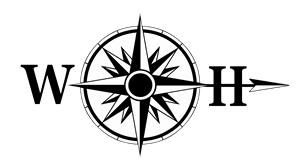Win A Marine Archaeology Course
In The Caribbean
Worth More Than £2,000
(Click here for further information)
Article #8
| Title: | Searching For Wrecks – Part #1 |
| Produced By: | Mike Haigh (Project Director Wreck Hunters) |
In truth, ancient wrecks are located in one of two ways.
The first is by accident, which in my experience is the most common method. A fisherman loses his nets on a piece of protruding timber, or a spearfisherman notices an ‘odd’ shape which turns out to be an anchor from a doomed vessel. The second is by thorough research and systematic searching. It is with the latter process that is the subject of this article.
- The three main problems that face those seeking of ancient vessels are:
The ‘general’ nature of the recorded location of lost ships. - Charts of the time when many vessels foundered were not the hydrographic masterpieces that we enjoy today. Many were in fact copies of other cartographer’s work, so there is plenty of room for confusion and incorrect information to slip in.
The depth of the remains. If your vessel is beyond the depth that divers can safely operate at then you are limited in your approach to what we would call ‘electronic methods’ – some of which might be quite costly.
There has been a trend, some might even say an obsession, in recent years to the search for deep water sites. Both in terms of diving archaeology and for what we might call ‘prestige’ shipwrecks. The theory is sound. Wrecks that rest in deeper water are less likely to be broken up and therefore more ‘rewarding’ in terms of their preservation and the knowledge, or other values, that they may hold. However, of the three to four million shipwrecks estimated to lie beneath the waves a large number lie in the shallows. Surely, they deserve some attention!
The first key point in the process is to ensure that, whatever search method is employed, a record of the area being covered is made. Many searches omit to do so – which of course means that whole exercise has been a waste of time. Before any type of search is undertaken, a number of factors need to be determined, the most important being: What sort of site you are looking for?
What is known of the background information to the loss? And what do you know about the general locality? From these it is possible to design a search plan which will define the area to be searched, the width of coverage of the area to be investigated, the type and size of object being sought and the velocity of the search. These factors will indicate how long the search will take.
Let us first deal with what I am going to call ‘visual’ methods. In the main, these involve divers and low-cost equipment in relatively shallow waters but requiring reasonable visibility.
Most divers will be familiar with swim line, grid and circular searches from their training programmes. In the past, to speed things up, divers were pulled along on underwater sledges. The Oliver was located by such a method. These days underwater scooters are used. In shallow water there is no reason why an underwater GPS system could not be employed. When we move beyond the operational depths of divers towed cameras and remotely operated vehicles (ROV’s) can be used. These are of course much more expensive operations than the diver-based ones. They can, and do, catch the public’s imagination.
Many remember the submersible ‘Alvin’ and the mini-ROV ‘Jason Jr’ exploring the Titanic back in 1985. Visual searches work best where you are covering a relatively small area. When you need to cover a large area, it is normal to use what we generally call electronic methods. One of the simplest forms of electronic search equipment is the echo sounder.
In 1990, I worked the Gulf of Mexico – courtesy NOAA with a team of divers which managed to relocate the wrecked super tanker the Amoco Cadiz using just such a tool. More advanced methods include the use of magnetometers and side-scan sonar.
The Mary Rose was located by an early version of the latter. The problem with all these methods is that they have to be towed behind a boat, which makes your search accuracy dependant on surface conditions. So, what do you do when your search area is ‘difficult’ to deal with, due to factors?
In the next article we will look at exactly this question.
Mike
